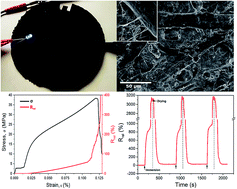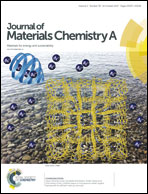Smart papers comprising carbon nanotubes and cellulose microfibers for multifunctional sensing applications
Abstract
Composite nanocoating of cationic polyacrylamide and aqueous dispersion of hydroxyl-functionalized carbon nanotubes (CNTs) with pre-adsorbed alkali lignin on lignocellulose wood microfibers has been developed to produce lightweight, flexible, and electrically conductive paper sheets from a simple, low-cost, and well-established papermaking process. Electron microscopy and Fourier transform infrared spectroscopy revealed the formation of strong interfacial hydrogen bonding between the oxygen-containing functional groups on the CNT surfaces and the hydroxyl groups of the cellulose microfibers. As a result, the mechanical properties of the papers with CNT content as low as 2.5 wt% were greatly improved compared to the pristine materials, with up to 10, 55, and 422% increases in tensile strength, internal bonding strength, and wet strength retention, respectively. The multifunctional sensing behavior of the CNT–cellulose composite papers to tensile strain and liquid water was examined comprehensively. Results show that these papers have superior tensile strain sensitivity compared to conventional foil gauges. Moreover, the water-induced electrical resistance changes can be tailored by the paper composition and resistance variations of more than three orders of magnitude were achieved without any degradation of the sensing performance through cycling. These smart papers provide a low-cost and renewable alternative to petrochemical-based materials for portable electronics and sensing applications.



 Please wait while we load your content...
Please wait while we load your content...